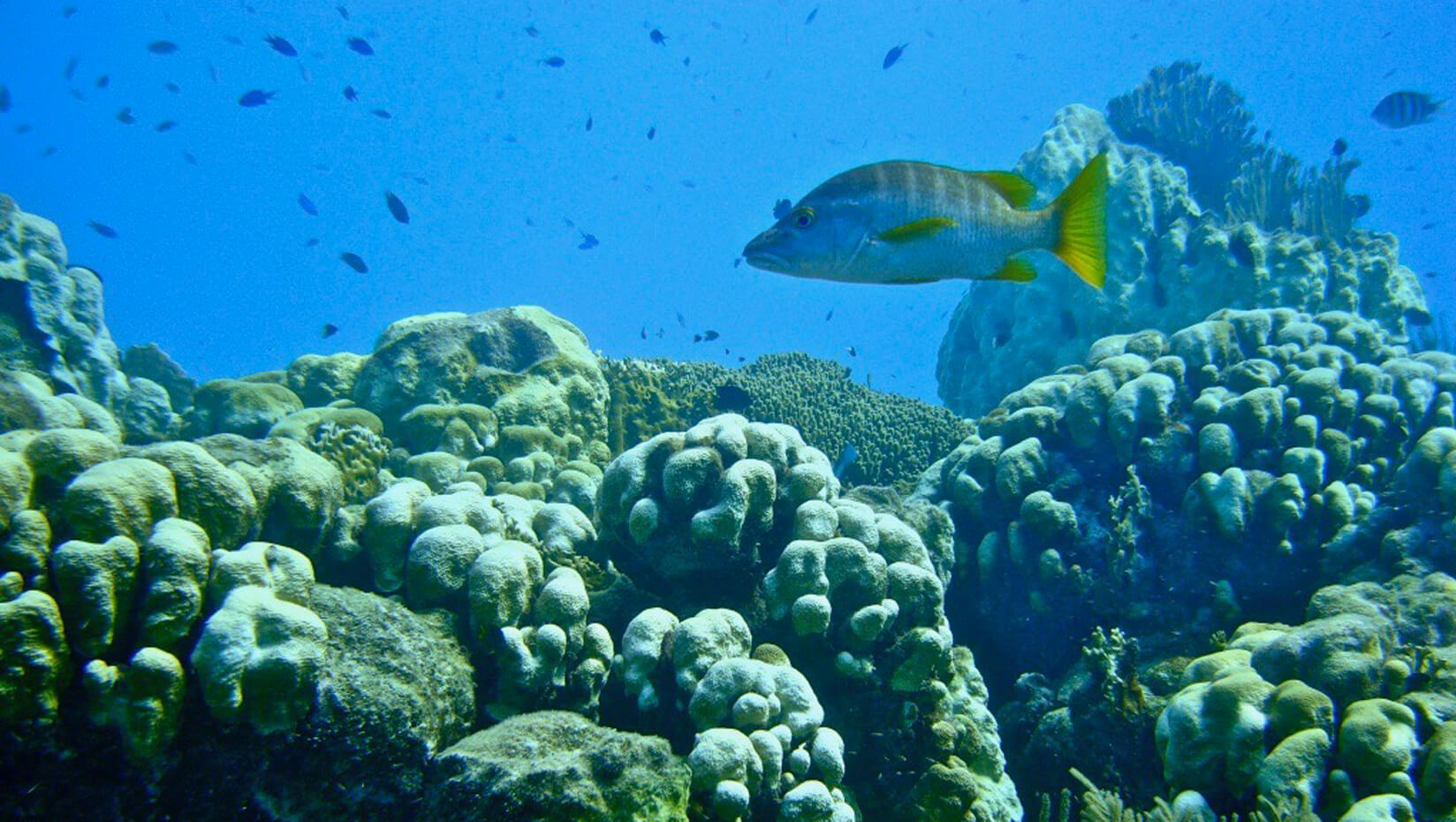
Steneck: Local conservation enables Caribbean reef to recover after hurricane, coral bleaching
Even with ocean warming, coral bleaching and an intense hurricane, local conservation actions helped a Caribbean coral reef ecosystem rebound in about a decade.
Bob Steneck began studying coral reefs off the island of Bonaire, near Venezuela in the Dutch Caribbean in 2002.
And for more than 15 years, the University of Maine professor of marine sciences and a team of UMaine graduate students regularly monitored the live coral, algae, reef fishes and juvenile corals at multiple locations.
Their goal was to document trends of key ecosystem drivers.
Steneck says the long-term case study shows that management at the local level can improve conditions for regrowth and for the establishment of juvenile corals, thereby enhancing the recovery resilience of these endangered ecosystems.
Today, Bonaire’s coral reefs have more parrotfish, less macroalgae and higher coral cover than most others in the Caribbean.
But that wasn’t the case a little more than 10 years ago.
Beginning in 2008 with Hurricane Omar, followed by a coral bleaching event in 2010, and a slight decline in the number of parrotfish due to fishing, the reef was in trouble.
The reef had a 22% decline in coral cover and a threefold increase in macroalgal cover. Juvenile coral densities declined to about half of their previous abundance, says Steneck.
But after fishing for parrotfish was banned in 2010, its population soon stabilized. Since parrotfish eat harmful algae, conditions improved for population density of juvenile corals and the survival and growth of adult corals.
As a result, overall coral cover returned to pre-hurricane and bleaching levels.
Steneck says he believes this is the first example of a resilient Caribbean coral reef ecosystem that fully recovered from severe climate-related mortality events.
“It’s impossible to climate-proof a coral reef but with improved management the rate of recovery can be markedly shortened,” he says. “This is what we call ‘recovery resilience.’”
A key takeaway, says Steneck, is that the tourists who flock to Bonaire should continue to pay a diving user fee to explore the reefs. It’s a good business model to sustain financing for the island’s marine conservation.
Bonaire’s relatively vibrant tourism-driven economy means fewer people there depend on catching coral reef fishes for food, which helps the coral reef ecosystem.
While complete recovery of the reef occurred 8–10 years after the climate-driven disturbances, Steneck says the frequency of coral bleaching events and the frequency (and size and strength) of hurricane events have increased.
Prior to Hurricane Lenny in 1999, the last major hurricane to hit Bonaire was in 1877. But Hurricane Omar struck in 2008, just nine years after Lenny.
So while the relatively short-term recovery of the Bonaire coral reefs is promising, Steneck says even the best-managed reefs may not be able to recover in a world growing increasingly hostile to these endangered ecosystems.
Read more about the study in “Managing Recovery Resilience in Coral Reefs Against Climate-Induced Bleaching and Hurricanes: A 15 Year Case Study from Bonaire, Dutch Carribbean” published in Frontiers in Marine Science.
Co-authors are Suzanne Arnold of the Island Institute in Rockland, Robert Boenish of the Environmental Defense Fund in Boston, Ramón de León of Reef Support BV of Bonaire, Netherlands, Peter Mumby of the University of Queensland in Australia, Douglas Rasher of Bigelow Laboratory for Ocean Sciences in Boothbay Harbor, and Margaret Wilson of the University of California, Santa Barbara.
The Pew Fellows for Marine Conservation first funded the research, which was later supported by Stichting Nationale Parken Bonaire, a nongovernmental, not-for-profit foundation commissioned by the island’s government to manage the Bonaire National Marine Park and the Washington Slagbaai National Park.
Contact: Beth Staples, 207.581.3777, beth.staples@maine.edu
